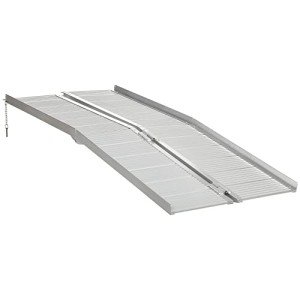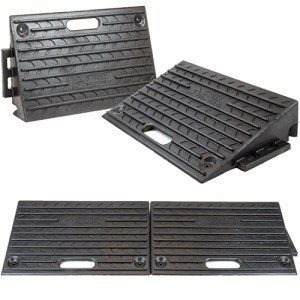
Ramp For Wheelchair
Company Description
Wheelchair Ramps For Mobile Homes Tools To Ease Your Everyday Lifethe Only Wheelchair Ramps For Mobile Homes Trick That Everybody Should Be Able To
Wheelchair Ramps for Mobile Homes: Accessibility Solutions for All
As society advances towards greater inclusion, accessibility in all aspects of life has ended up being vital, particularly for individuals who need mobility support. Mobile homes, typically admired for their cost and versatility, can sometimes provide obstacles for wheelchair users. Wheelchair ramps can provide an essential solution, ensuring that everybody has equivalent access to their living spaces. This blog site post will look into the importance of wheelchair ramps for mobile homes, the various types available, and considerations for installation.
Tabulation
- Importance of Wheelchair Ramps
- Kinds Of Wheelchair Ramps for Mobile Homes
- 2.1 Portable Ramps
- 2.2 Semi-Permanent Ramps
- 2.3 Permanent Ramps
- Product Considerations
- Setup Guidelines
- Maintenance Tips
- Often Asked Questions (FAQs)
- Conclusion
1. Significance of Wheelchair Ramps
Wheelchair ramps are essential for individuals with limited mobility for numerous reasons:
-
Independence: Ramps supply people with the capability to get in and leave their homes without needing support, promoting autonomy.
-
Security: The lack of a ramp can result in mishaps and injuries, especially for those with mobility devices. Ramps reduce these dangers by offering a steady, gradual slope.
-
Inclusive Living: As more individuals choose mobile homes for their cost and mobility, guaranteeing that these homes are available is crucial for creating inclusive neighborhoods.
2. Kinds Of Wheelchair Ramps for Mobile Homes
When choosing a ramp for a mobile home, numerous options are created to meet particular needs and preferences.
| Ramp Type | Description | Pros | Cons |
|---|---|---|---|
| Portable Ramps | Lightweight, easy to transfer and set up. Often made from aluminum or fiberglass. | Flexible and practical for temporary usage. | May not be durable for long-lasting usage. |
| Semi-Permanent Ramps | Repaired in place but can be gotten rid of if necessary. Generally more stable than portable ramps. | Uses a balance in between versatility and stability. | Some assembly required; might need authorizations. |
| Irreversible Ramps | Developed directly into the home structure, typically created to meet regional structure codes. | Extremely resilient and customized to particular needs. | More costly and often needs professional installation. |
2.1 Portable Ramps
Portable ramps are especially appropriate for those who might need mobility help periodically. They can be rapidly established and eliminated, making them ideal for temporary ease of access solutions.
2.2 Semi-Permanent Ramps
For people trying to find a solution that balances versatility and stability, semi-permanent ramps are an excellent choice. They offer the benefit of being semi-fixed while still permitting removal if circumstances change.
2.3 Permanent Ramps
Long-term ramps are best suited for long-term locals who need constant accessibility. These ramps can be customized to fit the specific layout of a mobile home, making sure optimum usability and aesthetic appeal.
3. Product Considerations
The product of the ramp considerably impacts its sturdiness, upkeep requirements, and aesthetic compatibility with the mobile home.
- Aluminum: Lightweight and rust-free, making it a perfect option for portable ramps.
- Wood: Offers a traditional appearance and benefits long-term ramps however needs routine maintenance to prevent rot and splinters.
- Fiberglass: Strong and lightweight, resistant to weather and UV rays, making it suitable for various climates.
4. Setup Guidelines
Setting up a wheelchair ramp needs careful preparation and execution. Here are some key steps:
- Assess the Area: Measure the height from the ground to the entranceway to determine the ramp’s length.
- Examine Local Regulations: Many places have specific codes relating to ramp installation, consisting of slope and product factors to consider.
- Pick a Design: Based on the planned use and space, choose on the ramp type and material.
- Collect Tools: Ensure all needed tools and products are prepared before beginning.
- Setup: If you are not comfortable with DIY setups, consider hiring an expert.
5. Upkeep Tips
Maintaining a wheelchair ramp makes sure security and longevity. Here are some practical upkeep ideas:
- Regular Inspection: Check for any loose bolts, indications of wear, or damages a minimum of biannually.
- Clean: Keep the surface clean from particles, especially in locations that might gather rain or snow.
- Weather-proofing: If using wood, use sealant or paint to secure versus wetness damage.
- Look for Slippage: Regularly examine the surface for needed traction improvements, especially throughout wet or icy conditions.
6. Frequently Asked Questions (FAQs)
Q1: What is the perfect slope for a wheelchair ramp?
A1: The Americans with Disabilities Act (ADA) advises a slope ratio of 1:12, implying for each inch of increase, there should be at least 12 inches of ramp run.
Q2: Can I install a ramp myself?
A2: DIY installation is possible for portable ramps, but irreversible and semi-permanent ramps might need expert assistance to ensure they meet safety standards.
Q3: How broad should a wheelchair ramp be?
A3: A minimum width of 36 inches is advised to accommodate most wheelchairs and mobility devices conveniently.

Q4: Do I need a permit to install a ramp?
A4: Many regions require a permit for permanent ramp installations. It is vital to check with regional guidelines before beginning the procedure.
7. Conclusion
Wheelchair ramps are not merely devices; they are important features of mobile homes that assist in ease of access and independence for people with limited mobility. By picking the best kind of ramp, materials, and installation approaches, anybody can improve their living area’s safety and ease of access. With continuous advancements in design and security standards, the journey towards inclusive living environments continues to move on, allowing everyone to take pleasure in life with self-respect and self-reliance.

